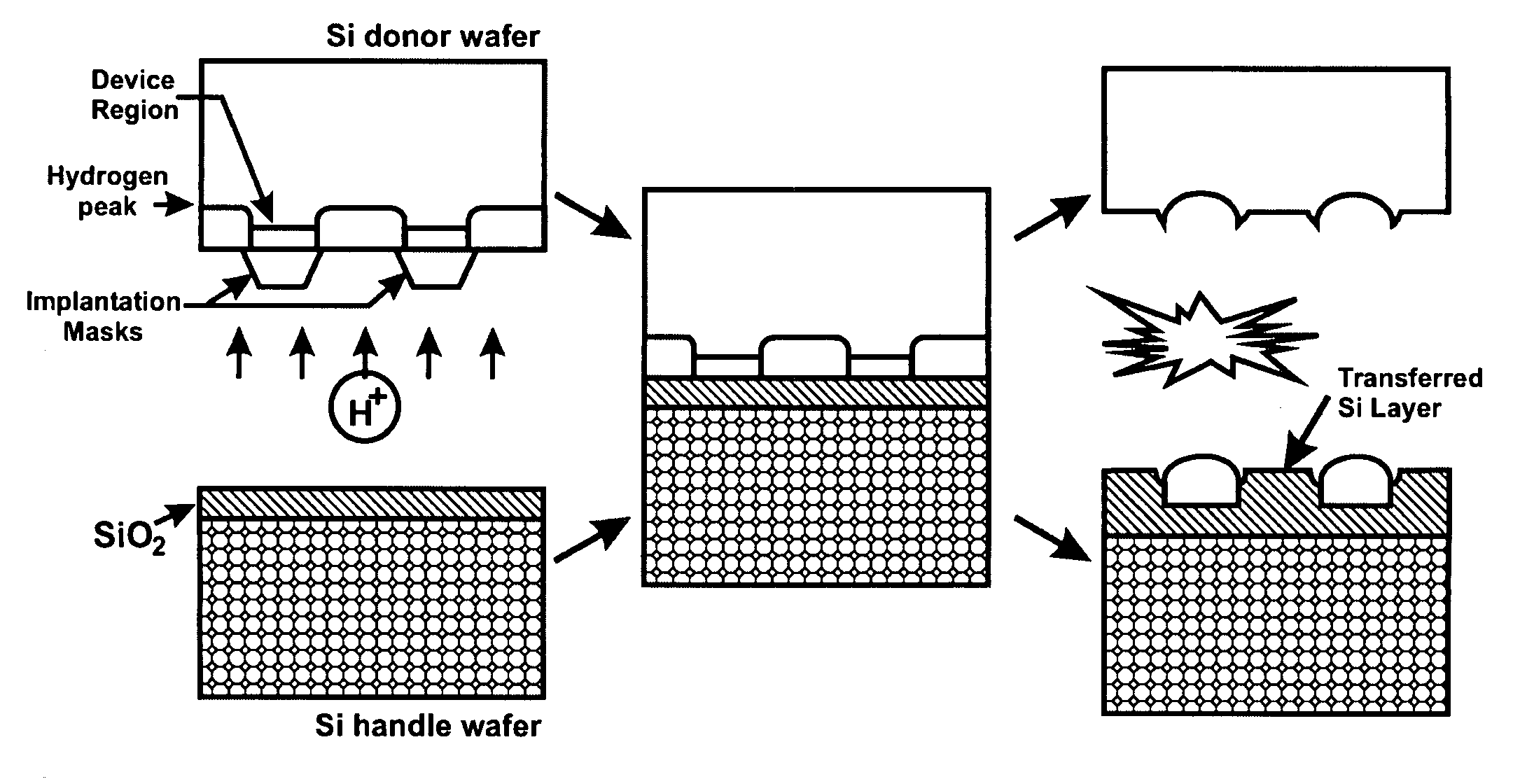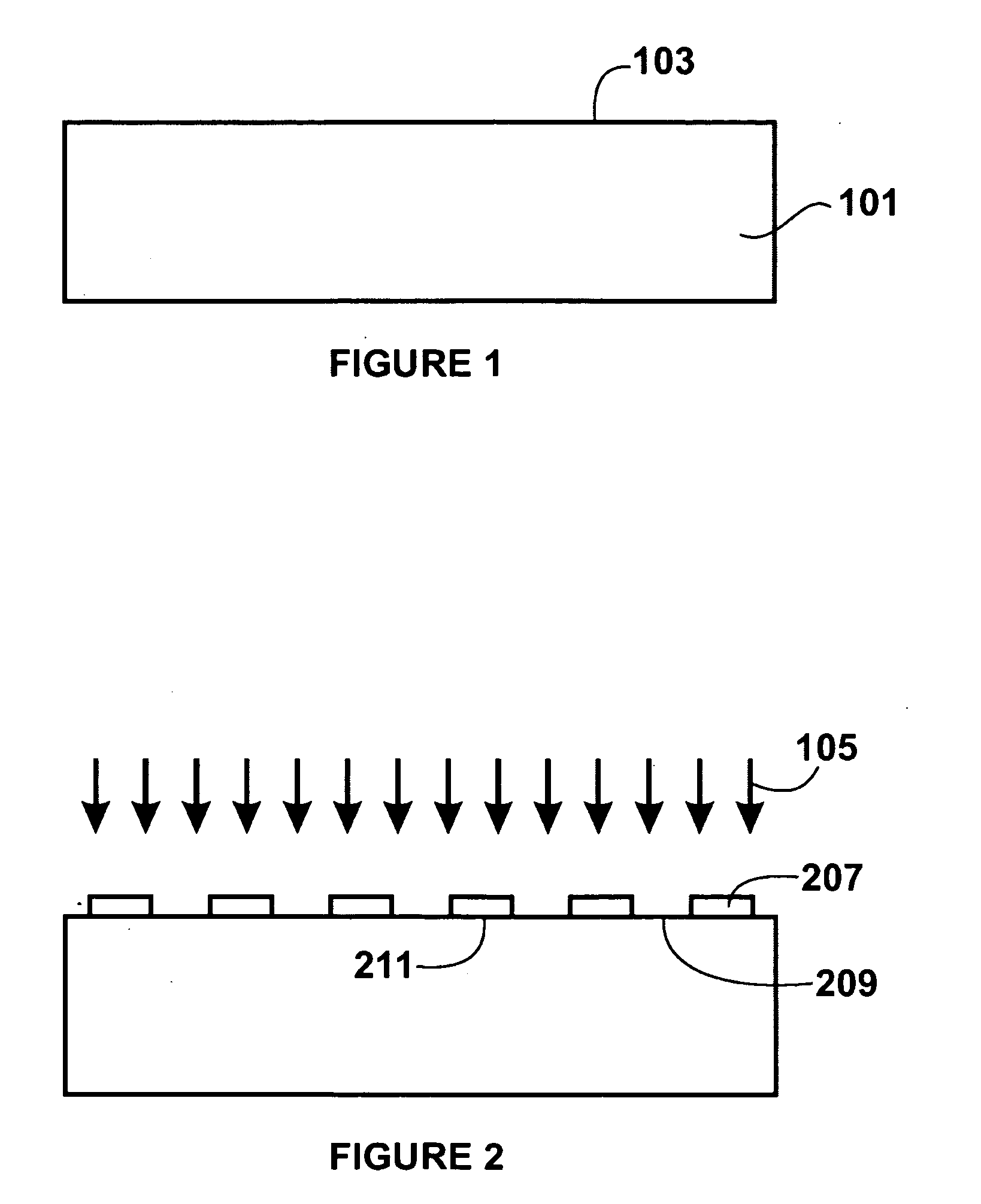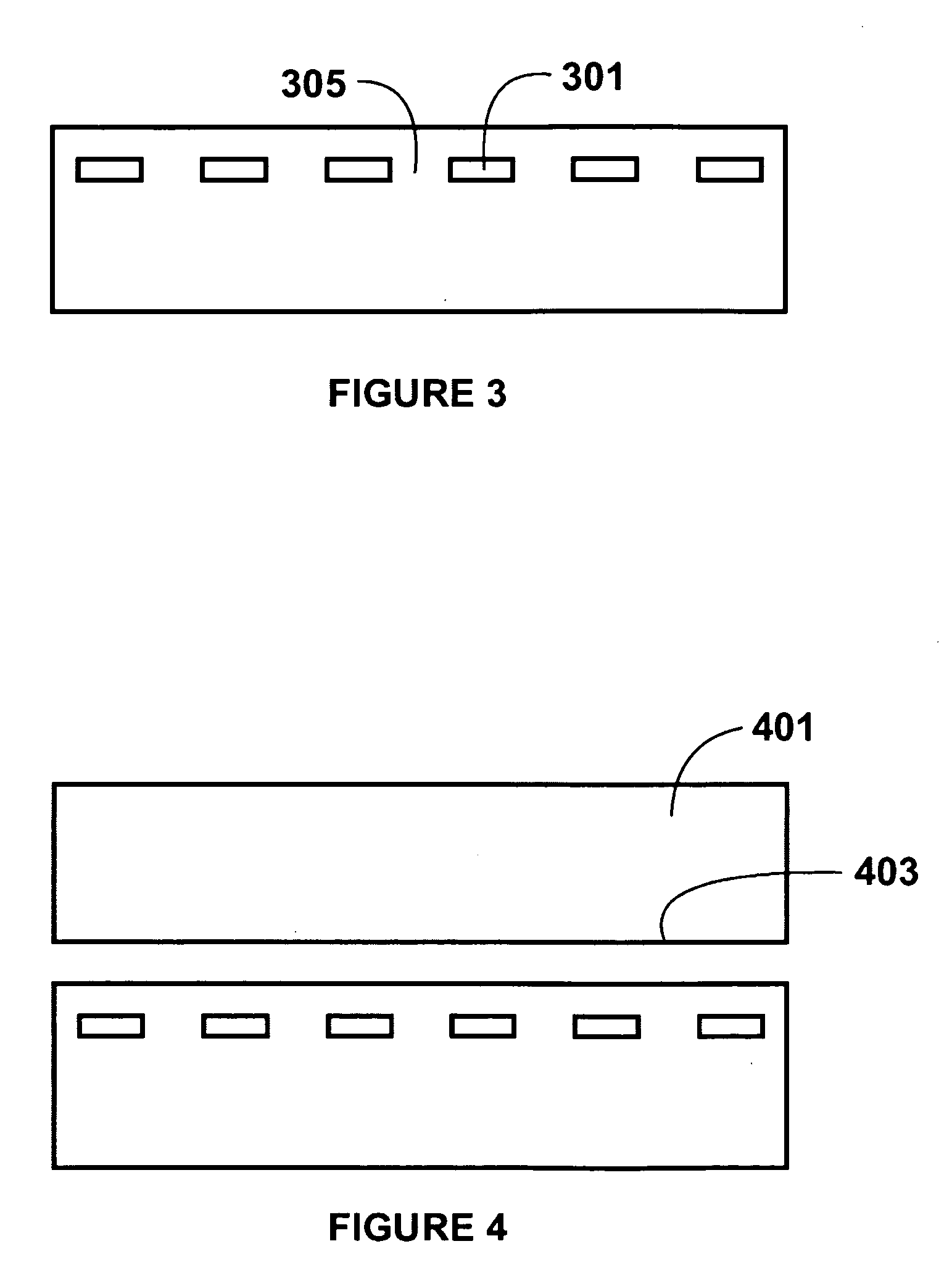Method and structure for textured thermal cut for photovoltaic applications for thin films
- Summary
- Abstract
- Description
- Claims
- Application Information
AI Technical Summary
Benefits of technology
Problems solved by technology
Method used
Image
Examples
embodiment
General Method Embodiment
[0017]In a specific embodiment, the present invention provides a method for fabricating a photovoltaic device that can be outlined as follows:
[0018]1. Provide a semiconductor substrate, e.g., single crystal silicon, silicon germanium, Group II / VI, Group III / V;
[0019]2. Form a blocking layer (e.g., mask, block, photo mask) including a plurality of opened regions overlying the surface region of the semiconductor substrate;
[0020]3. Forming a patterned cleave region using an co-implant process including hydrogen species by subjecting at least the hydrogen species to the plurality of opened regions to define a thickness of material to be detached, which is provided between the surface region and the patterned cleave region;
[0021]4. Remove the blocking layer;
[0022]5. Join the surface region of the semiconductor substrate via a glue layer to a support surface region of a support substrate;
[0023]6. Delaminate the thickness of material from a remaining portion of the ...
examples
[0047]To prove the principles and operation of the present invention, we have performed experiments. These experiments are merely examples, which should not unduly limit the scope of the claims herein. One of ordinary skill in the art would recognize many variations, modifications, and alternatives. These experiments are merely for purposes of demonstrating the texturing process in accordance with the present invention. Referring To FIG. 9, we have provided a simplified set of diagrams illustrating our experiment.
[0048]As shown, we provided a method for fabricating a photovoltaic material. As shown, the method includes providing a single crystal silicon semiconductor substrate, which includes surface region. The substrate included a blocking layer overlying the surface region. In a specific embodiment, the blocking layer was photosensitive material that included a plurality of opened regions. Such opened regions are separated by blocking layer according to a specific embodiment. We ...
PUM
 Login to View More
Login to View More Abstract
Description
Claims
Application Information
 Login to View More
Login to View More - R&D
- Intellectual Property
- Life Sciences
- Materials
- Tech Scout
- Unparalleled Data Quality
- Higher Quality Content
- 60% Fewer Hallucinations
Browse by: Latest US Patents, China's latest patents, Technical Efficacy Thesaurus, Application Domain, Technology Topic, Popular Technical Reports.
© 2025 PatSnap. All rights reserved.Legal|Privacy policy|Modern Slavery Act Transparency Statement|Sitemap|About US| Contact US: help@patsnap.com



